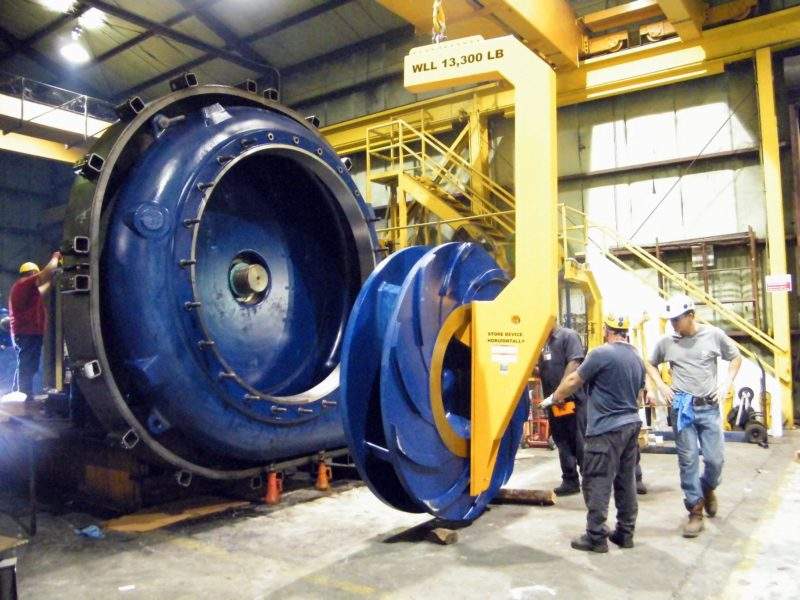
Since impellers are high-wearing slurry pump components, owners and operators need to maintain and remove impellers from their pump shafts when shaft sleeves or the impellers themselves require repairs or replacement. In fact, maintenance is of special importance as the impeller, along with pump shells and suction liners, determine pump performance. But what happens when a pump isn’t performing optimally due to a stuck impeller – and what could cause an impeller to get stuck in the first place?
Why is my impeller stuck?
According to GIW Industries Inc.’s Florida General Manager Dee Bentley, impellers can get stuck for many reasons. But pump owners and operators can avoid such issues by following his advice. Here are two common problems Bentley sees and recommends against:
- Using only one gasket or none at all — “We recommend using two gaskets. They work against one another for easier removal,” Bentley said.
“When you use one, the impeller will want to overtighten on the shaft, so it makes it more difficult to get off. Two gaskets slide against one another, making it easier to break loose. If you don’t use any gasket at all, it all galls up together.” - Applying anti-seize to the hub face — “People like to use anti-seize on the threads, faces of the shaft sleeve, the impeller, and the gaskets,” Bentley said.
“That actually causes it to overtighten: It allows the parts to become more slippery and it will overtighten on the shaft. A good rule of thumb is you want to use anti-seize on the threads of the shaft and the impeller, but you want to keep the axial faces of the shaft sleeves, the gaskets, and the impeller hub dry. In those cases, if you get the anti-seize on those areas, it’ll tighten even further on the shaft and can over-torque and break pieces of the shaft or the impeller off itself.”
In fact, most ‘stuck impeller’ issues have to do with gaskets. But some extenuating circumstances exist that can also lead to impellers getting stuck on pump shafts.
For example, “somehow or another, the threads break either on the shaft or the impeller, they get crossed, and you can’t get the impeller to break loose,” Bentley said.
“If you inspect the threads and they look damaged or broken, clean them up. Use a pencil grinder so you don’t risk doing more damage.”
Did You Know?
Putting a new impeller on worn threads results in rapid failure and damage to other wet-end parts.
While pump owners and operators can still run their pumps with stuck impellers, their bearings will fail, and they risk damaging their pump motors. This can lead to additional repair issues.
“When the bearings fail in the assembly, you can’t turn it to break it loose,” Bentley said. “Typically, there’s not a whole lot you can do other than cut the shaft off behind the impeller to get it out.”
Safety tips
While a call to the pump experts for impeller assistance is always an option for such extreme cases, it’s not always a necessity. Pump owners and operators should follow these safety suggestions when troubleshooting if they have significant challenges removing their impellers.
“If you don’t get the impeller screwed all the way on when you get ready to start the pump up, it’s going to slam against the shaft sleeve, and you can do damage to the impeller or the sleeve itself,” Bentley explained.
“You want to make sure it’s fully seated before you start the pump up.”
Bentley also offered an extremely important reminder.
“Do not apply any heat to the impeller – that’s a death trap,” Bentley explained.
“It’s a sealed cavity and can explode.” Because the impeller is part of the wet end of the pump, the moisture and air trapped inside pose a major safety danger. Bentley always reminds pump owners and operators to avoid reversing the motor when an impeller gets stuck.
Follow the proper impeller removal steps and use the safety tips above to avoid the pump damage reversing the motor can cause. When in doubt, simply call GIW for expert advice and assistance. And remember: Always put safety first.

